
These two terms are often mixed up yet they mean VERY different things. Let’s keep it simple. Locality indicates the location a particular animal is found in the wild. This usually coincides with sub-species, but as a subset of it. Morph is how we label different phenotypes. Remember that phenotype is appearance. Morph is essentially the same thing – lets see – all morphs are phenotypes, but not all phenotypes are morphs.
- Locality = location
- Morph = phenotype = outward appearance
The various boa constrictors can show us some excellent examples of locality and morph. There are many different types of boas. Remember Sub-species is a category within the larger group that shows distinct phenotypic differences. The boa constrictor sub species are as follows:
Sub Species
Boa C. constrictor (bcc): True Red Tails
Boa C. imperator (bci): Central American, Common, or Columbian
Boa C. Longicauda and Ortonii: Peru
Boa C. Sabogae: Pearl Island
Boa C. melanogaster: Ecuador
Boa C. Amarali : Bolivia
Boa C. Occidentalis: Argentina
Boa C. nebulosus: Domincan Island
Boa C. orophias: St. Lucia island
These photos show 3 different sub-species: BCI, BCS, and BCC

Common boa 
Pearl Island Boa 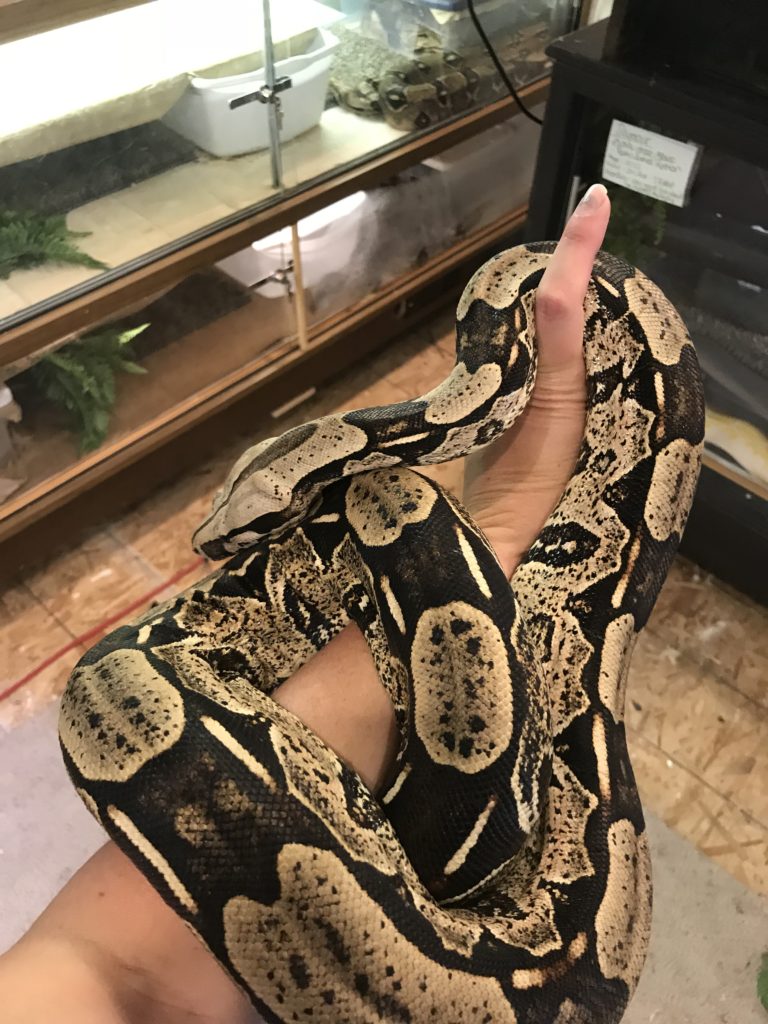
True Red Tail boa
Locality is yet another layer of categorization within the sub-species.
BCC localities: Peruvian, Surname, Guyana, etc
BCI localities: Colombian, Hog Island, Central American, Nicaraguan, etc
These different localities of boa constrictors have some differing characteristics but it can take a trained eye to really be able to recognize which is which. Unfortunately captive breeding has diluted some of these localities enough that mixes are often more common than pure locality specimens. A conservationist perspective would recommend maintaining these blood lines as pure as possible in the hopes of preserving their unique characteristics. Here at Snake Haus we try to use scale counts as a way to make educated guesses about what the locality is of each boa that is surrendered. Sometimes we have animals come in with known pedigrees. Other times it is a mystery due to lack of history or knowledge on the part of the previous owner.
Locality
Some of the pure locality boas have beautiful coloring that differs greatly from their cousins. The Hog Island and Peruvian boas are great examples of this. They both have much higher pink and coral tones than the other localities.

Here you see an example of both Morph and mixed Locality individuals. Raiden and Dante are Hypo Hog Island boas. The Hog Island pure locality does not have a hypo morph. These individuals are cross bred with another locality, common boa, to introduce the hypo genes into the hog island locality. Raiden has a third layer which is Jungle giving him a different saddle shape than Dante and Harley.

Raiden 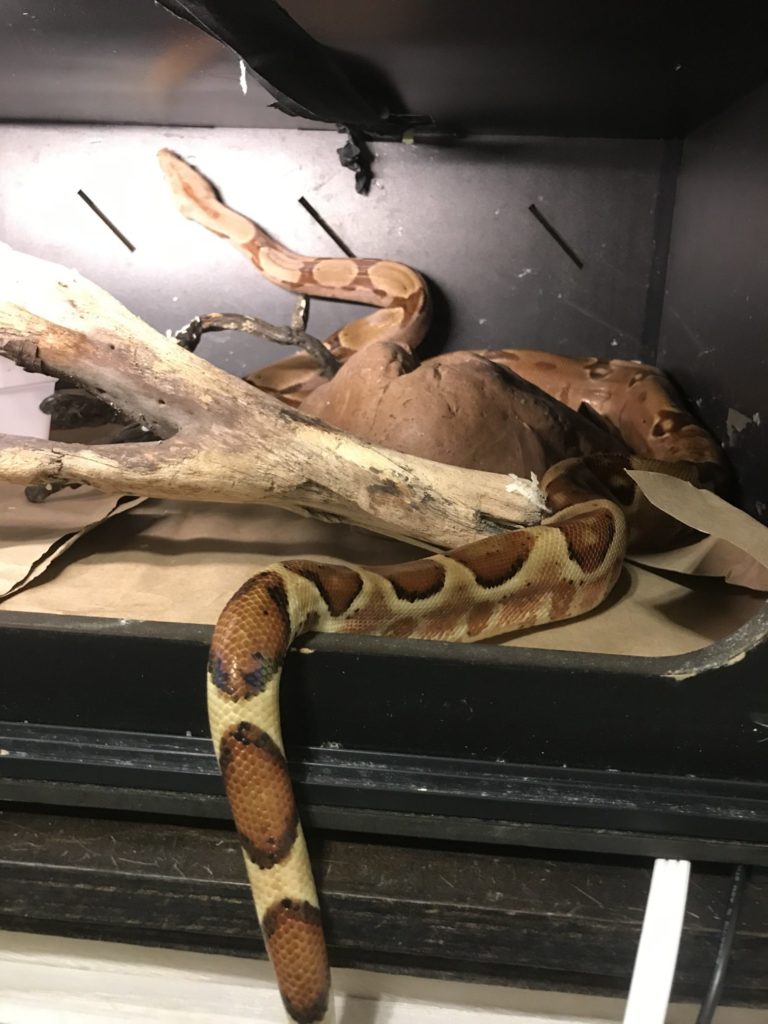
Dante
The visual differences between the BCC localities are more subtle that what you see above in the Hog Island BCI. Below we have three of our BCC’s for comparison. The suriname on the left has broad peaked saddles and a clean back ground color. The peruvian in the middle has smooth saddles, golden back ground color and excellent, cute eye lash markings. The Guyana on the right has peaked saddles like the suriname but they are more narrow and overly a much darker and variable background color. This particular individual happens to have a spectacularly gorgeous greyish purple head.
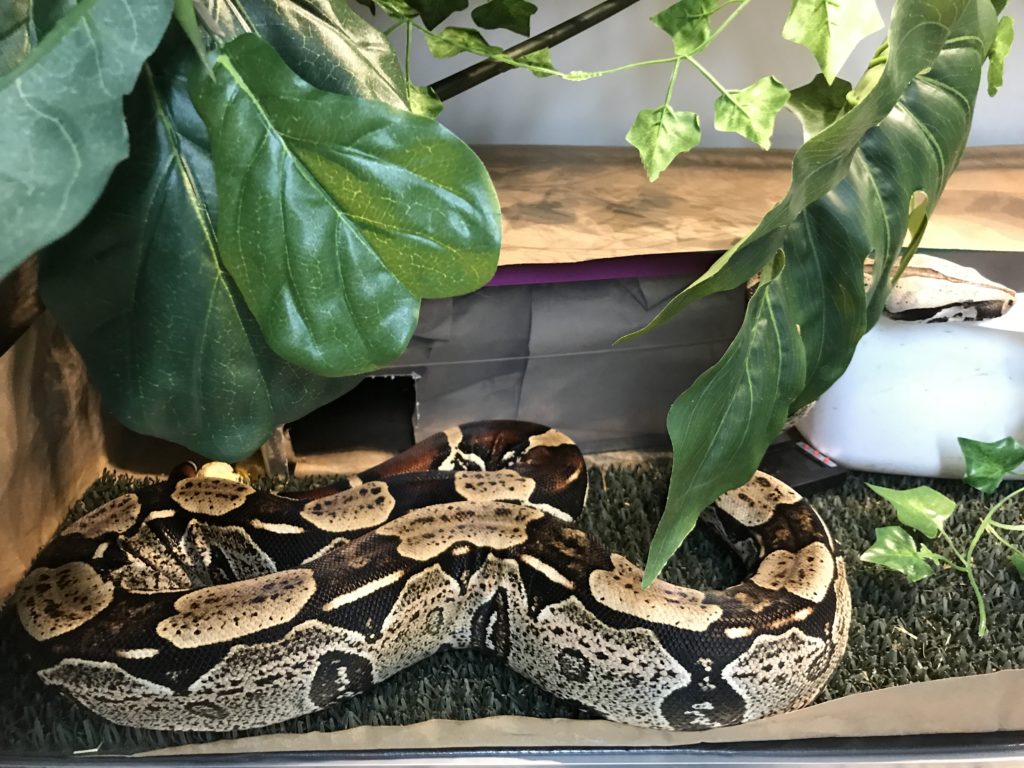
Suriname 
Peruvian 
Guyana
Here you can see three of the different locality BCC’s that live at Snake Haus. (left to right: Miracle, Maya, Auryn)
Morphs
Morph is where the bright colors come in. Remember that Genotype is how we label the specific sets of genes that dictate our phenotype. When looking at different morphs it is subtle changes or variations in the Genotype that produces the bright colors and different patterns that have become so sought after in the pet trade. These are the individuals like Hypos, Albinos, and Jungles. Below you can see several albino morphs of some of the different types of snakes that live at Snake Haus. These are all essentially the same Morph – albino, but the specific genotype of each is different and arose independently in each species.

reticulated python 
sand boa 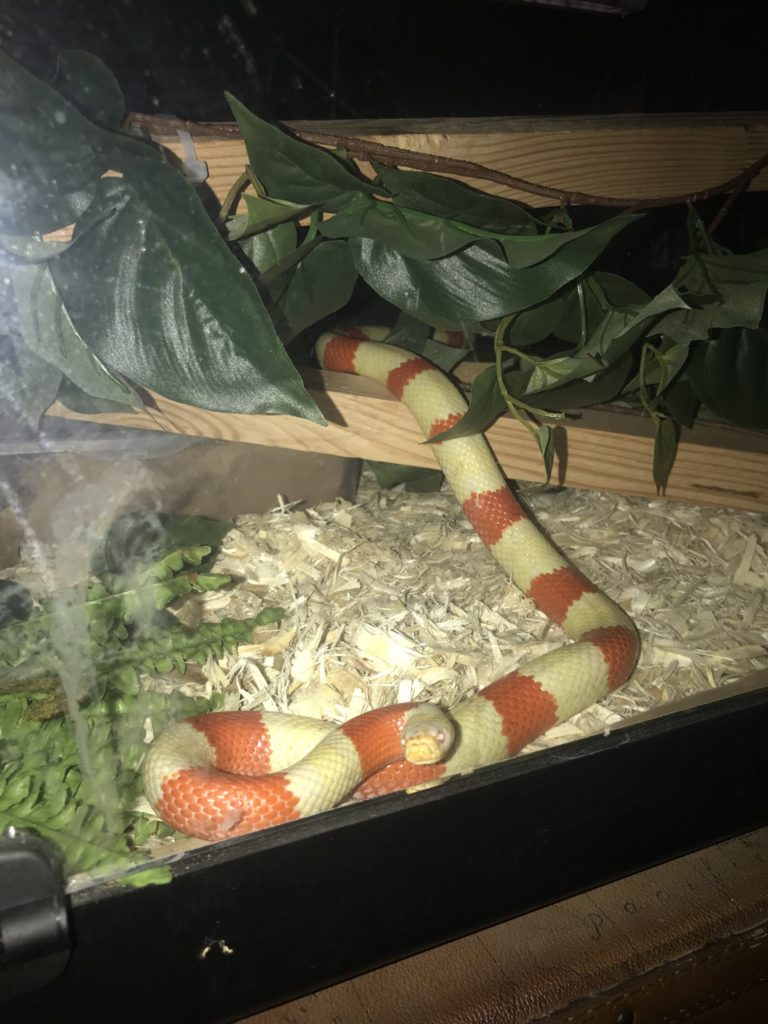
milk snake 
king snake 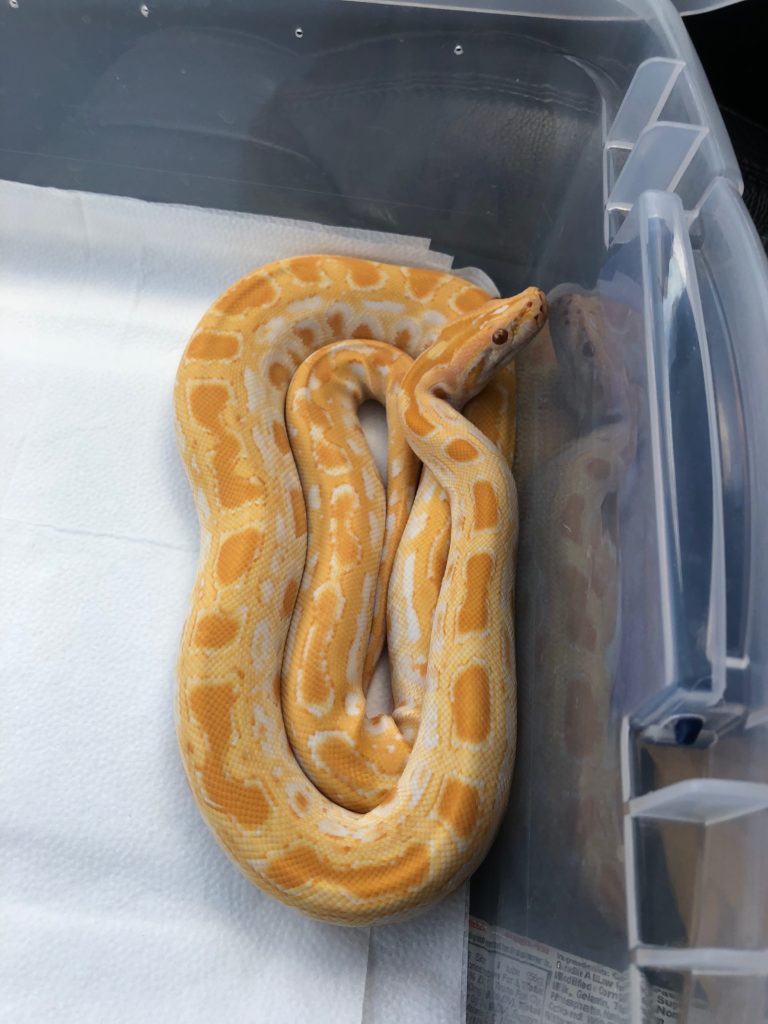
burmese python 
blood python 
corn snakes 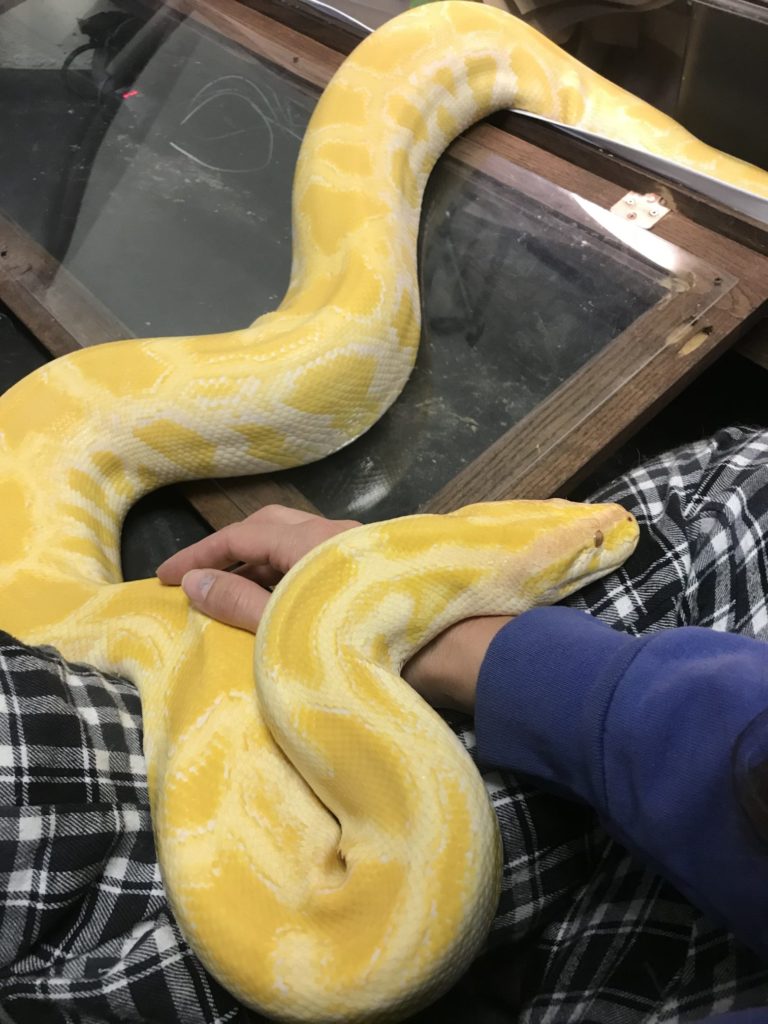
burmese python 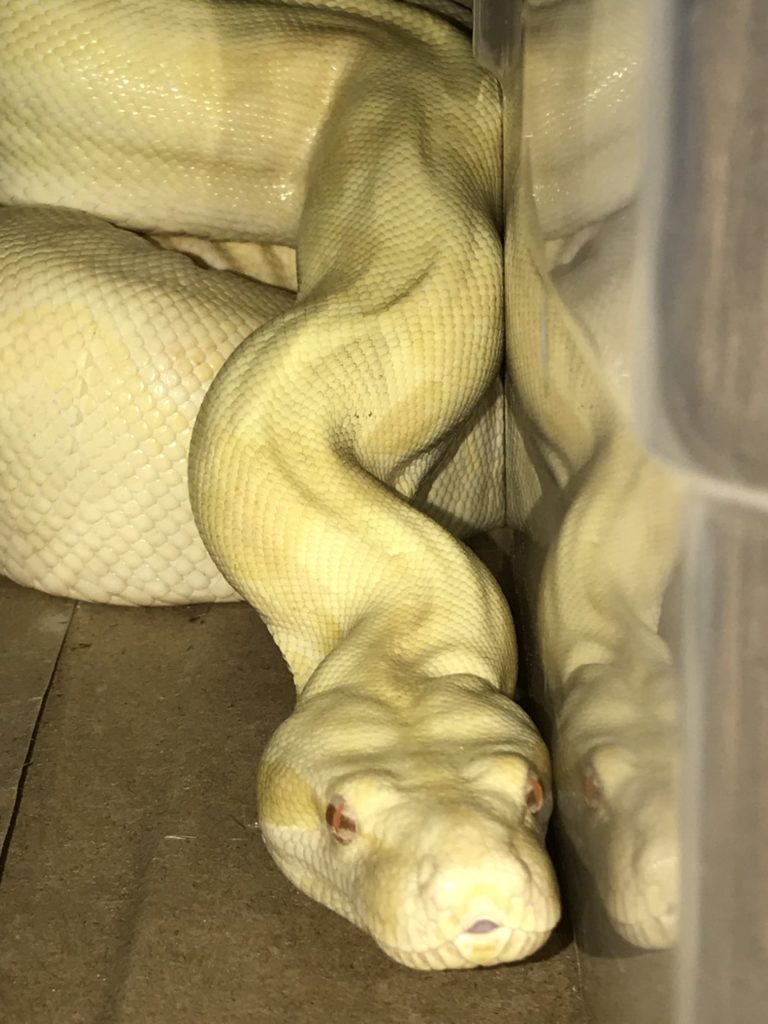
colombian boa 
reticulated python
Pnenotype Descriptors and Names
Lets start this section by admitting an all-inclusive list of morphs names would be way too large to include here. Instead what we have is a list of the more common ones to at least help you get started down the rabbit hole of genetic morphs.
Normal or Wild Type: These terms are used to refer to the phenotype of a sub-species or locality as it would be most commonly found in the wild. This is the form that was created by nature in response to ecological pressures and the need for camouflage or advertisement of unique abilities in the animal’s particular ecosystem niche. Snake Haus has many examples of “normals” for you to see. Check out the following animals to see what the wild type looks like for their species:
- Reticulated Python: Valac
- Ball Python: Angus & Malcom
- Burmese python: Ludo
- Blood python: Rowen
- Carpet Python: Sallah
Saddles: This is primarily a boa constrictor term. It refers to the dark patches of color along a boa’s back. Some of the types of boas will have different shape and number of saddles. For example visit Priest‘s page to see a type of boa (Calker Cay) that has a much higher number of saddles than the other types of boas. Then compare him to Miracle and Maya (both BCC’s) who have a much lower number of saddles.
Axanthic: NO yellow; this gene gives the animal which ever background color it would normally have with OUT yellow pigment in it. Take a Blue morph Green iguana for example. What would green be without yellow? Blue of course. Or check out Frigg to see an Axanthic Coastal Carpet Python.
Anerythristic: NO red; this gene, often abreviated to Anery, is like axanthic but means there is no red pigment. Have a look at Hercules to see an anery common boa, or Lore to see an anery superdwarf reticulated python.
Albino: Most people think an albino has no color. What is actually means is there is a defect in the pathways that synthesize melanin. Melanin is responsible for the darker colors in skin and hair. There are different types of albinism. Tyrosinase positive (T+) and negative (T-) animals are albinos that can achieve different levels along the pathway toward making melanin. This means the T+ animals have more rich reds and oranges but still no dark browns, greys, or blacks. T- animals can be quite pale often with mostly yellow and white coloration, however sometimes it is hard to tell by looks alone.
- T – negative: yellows and whites
- T – positive: reds and oranges
In these photos below you see a T+ albino on the left. That is Lilith, a Clark strain purple albino. On the right is a T- albino, Willie, one of our albino burmese pythons. Notice the much darker background colors that Lilith has.
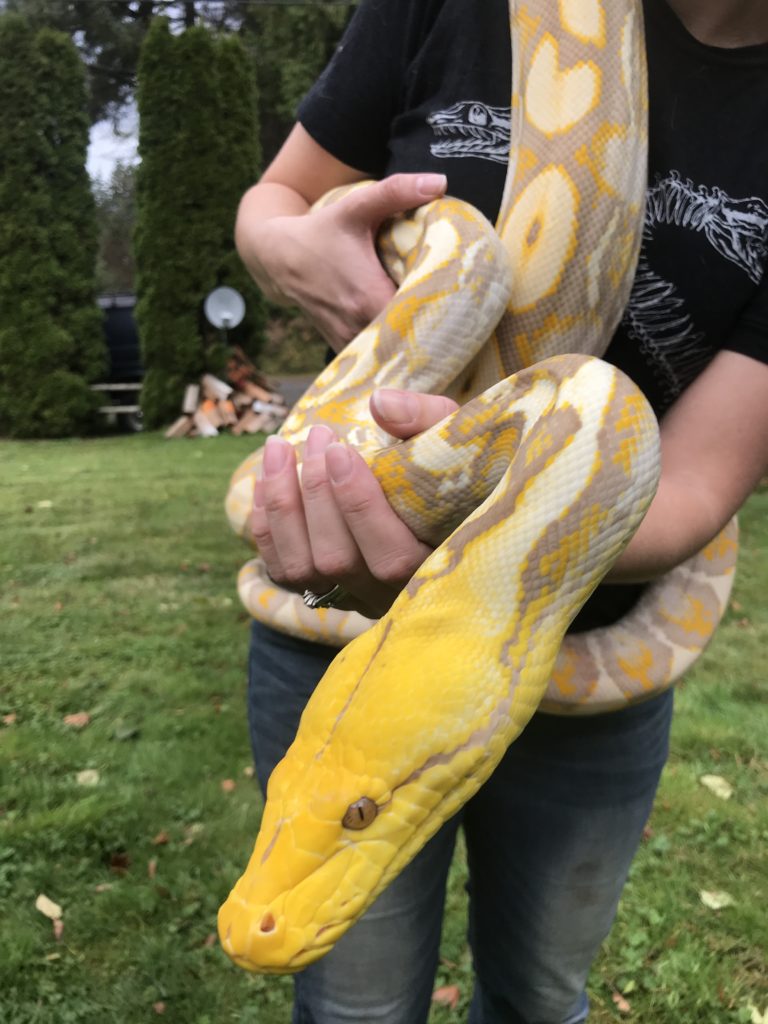
Lilith 
burmese python
Leucistic: This morph is often confused with albinos. They are similar but not the same. While an albino animal lacks all melanin, a leucistic animal only lacks melanin in their skin and hair/feathers/scales. The quickest way to differentiate between leucism and albino individuals is to look at the eyes. An albino animal will have non-pigmented eyes making them some shade of red. A leucistic animal will have colored eyes. Take a look at Stevie to see a Blue Eyed Leucistic ball python. There are also Black Eyed Leucistics.
Piebald: The piebald morph is actually PARTIAL leucism. These animals limply have Leucistic patches on their body rather than having their whole body be leucistic.
Hypo: This gene causes the animal’s markings to be smaller and less pronounced than normals. It allows for better showing of the back ground colors and can be combined with other morphs and localities. Have a look at Leonidas to see a hypo common boa or check out Raiden to see a hypo hog island boa. For comparison look at Basia or Junior to see normal.
Melanistic: These are animals that have more melanin than normal. Melanin is responsible for our dark brown, grey, and black pigments. Increased melanin makes an individual much darker than others. The Sumatran blood python is an excellent example of this. They have naturally become hypermelanistic in the wild and line breeding in captivity has further darkened their beautiful coloring. Visit Ash‘s page to see examples of this.
Jungle: This is a boa morph that causes change in saddle shape. High expression jungles have saddles that are elongated and connected to cause a double stripe down their back Go to Saga and Wren‘s pages to see some high expression jungle boas. Raiden is a hypo jungle (and hog island) so his saddles are not as obviously jungle – if you look closely though, you can see that his saddles do have a different shape to them than Leo‘s (a hypo normal) and are elongated in some places.
Titanium: Legend
Citrus
Mutations
Sometimes when breeding for certain morphs we accidentally end up with an undesirable mutation. This is most evident in the Jaguar carpet pythons and the Spider ball pythons. Seen below are Short Round and Lita who both suffer from severe neurological deficits caused by a gene mutation linked to their color morph. This shows the darker side of manipulating genotypes for a new and eye pleasing phenotype.
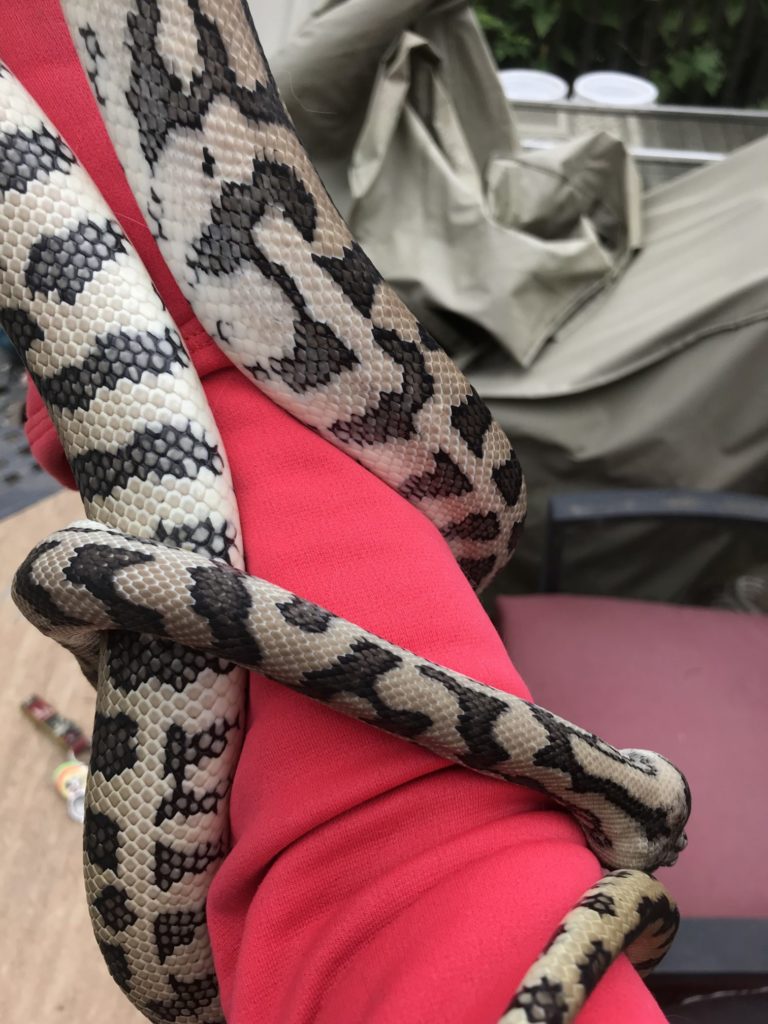
caramel jaguar carpet python 
bumble bee spider ball python
Visit Short Round and Lita’s pages to learn more about their neurological conditions.

